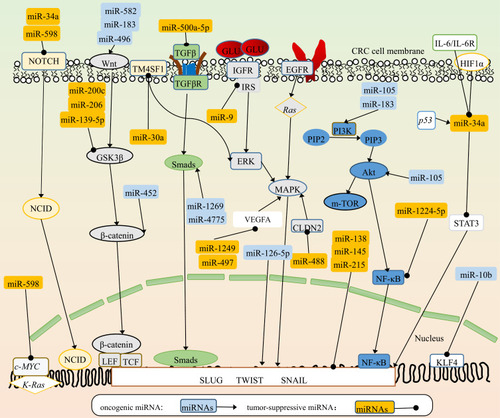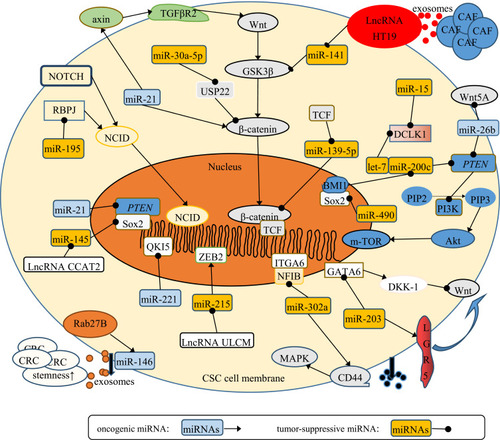Figures & data
Figure 1 miRNA-related EMT-regulating network in CRC cells. The miRNAs in light-blue squares refer to oncogenic miRNAs. The miRNAs in orange squares refer to tumor-suppressive miRNAs. The round shapes on the end of arrows refer to the suppressive function on target molecules. The sharp arrows refer to the oncogenic function on target molecules. Most miRNAs work by regulating several signaling cascades, including Notch–NCID, Wnt–β-catenin, MAPK–ERK and PI3K–Akt–NFκB, in various aspects. Also, some miRNAs work by interacting with proteins and genes. Above all, miRNAs finally target EMT-related core transcription factors (Slug, Twist and Snail) and regulate the EMT process of CRC.

Table 1 Dual effects of miRNAs in CRC EMT process
Figure 2 Signaling pathways related to miRNA regulation of CRC stemness. The miRNAs in light-blue squares refer to oncogenic miRNAs. The miRNAs in orange squares refer to tumor-suppressive miRNAs. The round shapes on the end of arrows refer to the suppressive function on target genes. The sharp arrows refer to the oncogenic function on target genes. Most miRNAs work by regulating several signaling cascades, including Notch–NCID, Wnt–β-catenin and PI3K–Akt–NFκB, in various aspects. Also, some miRNAs work by interacting with proteins and genes. lncRNAs can inhibit the effects of miRNAs on CRC stemness. Above all, miRNAs finally target stem markers (CD44, Sox, and LGR5), and regulate stemness of CRC.

Table 2 Effects of miRNAs on the regulation of CRC stemness
Table 3 Effects of miRNAs in clinical applications
